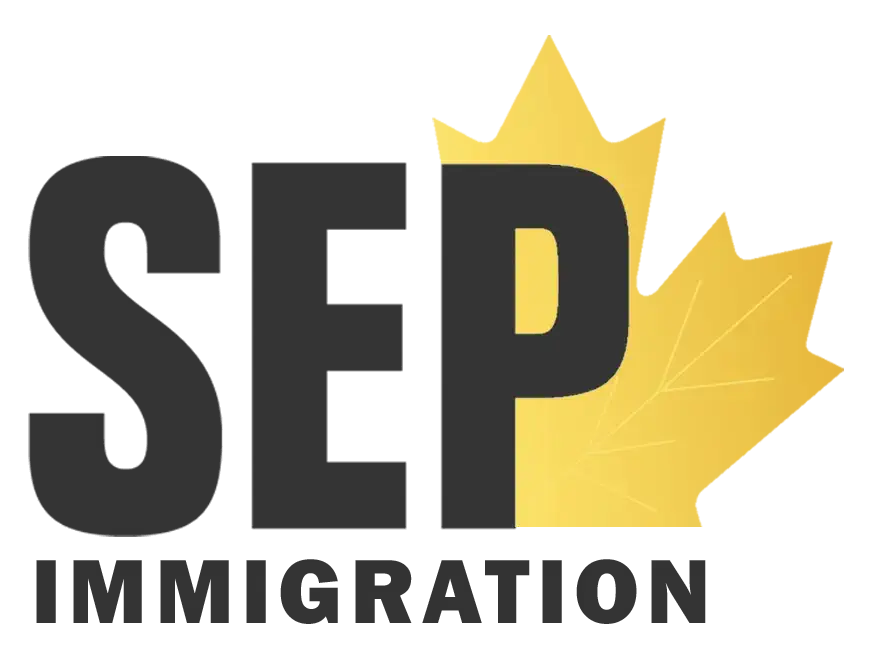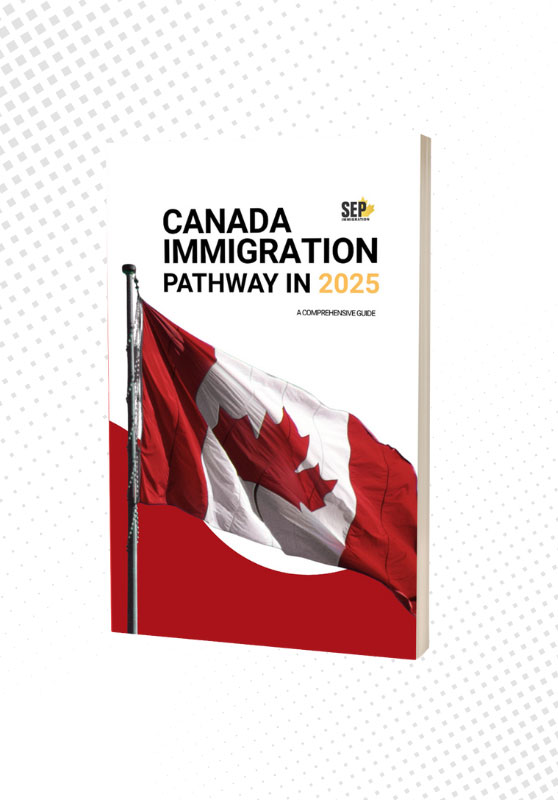
The public policy targets foreign nationals with at least one year of work experience in Canada in an essential occupation.You may be granted permanent resident status if you:
a. Have accumulated at least one (1) year of full-time work experience, or the equivalent in part-time experience (1,560 hours), in Canada, in an eligible occupation listed in Annex A or Annex B in the three (3) years preceding the date when the application for permanent residence is received. The one year of work experience must be obtained in one or more of the eligible occupations as follows:
- Stream A: the one year of work experience must have been acquired in one or more occupations listed in Annex A. Experience cannot be combined with Annex B occupations.
- Stream B: the one year of work experience must have been acquired in one or more occupations listed in Annex B, or a combination of occupations in Annexes A and B.
b. Be employed in Canada in any occupation at the time that the application for permanent residence is received.
c. Have attained a level of proficiency of at least benchmark 4 in either official language for each of the four language skill areas.
d. Reside in Canada with valid temporary resident status.
e. Intend to reside in a province or territory other than Quebec;
Annex A – Eligible Health-Related Occupations
Eligible health care occupations include all broad occupational category 3 occupations (Health occupations) from the National Occupational Classification (NOC) with the exception of Veterinarians (NOC 3114) and Animal health technologists and veterinary technicians (NOC 3213). Five occupations from broad occupational category 4 (Occupations in education, law and social, community and government services) are also eligible occupations.
Eligible Occupations:
NOC Occupation
3011 Nursing coordinators and supervisors
3012 Registered nurses and registered psychiatric nurses
3111 Specialist physicians
3112 General practitioners and family physicians
3113 Dentists
3121 Optometrists
3122 Chiropractors
3124 Allied primary health practitioners
3125 Other professional occupations in health diagnosing and treating
3131 Pharmacists
3132 Dietitians and nutritionists
3141 Audiologists and speech-language pathologists
3142 Physiotherapists
3143 Occupational therapists
3144 Other professional occupations in therapy and assessment
3211 Medical laboratory technologists
3212 Medical laboratory technicians and pathologists’ assistants
3214 Respiratory therapists, clinical perfusionists and cardiopulmonary technologists
3215 Medical radiation technologists
3216 Medical sonographers
3217 Cardiology technologists and electrophysiological diagnostic technologists, n.e.c.
3219 Other medical technologists and technicians (except dental health)
3221 Denturists
3222 Dental hygienists and dental therapists
3223 Dental technologists, technicians and laboratory assistants
3231 Opticians
3232 Practitioners of natural healing
3233 Licensed practical nurses
3234 Paramedical occupations
3236 Massage therapists
3237 Other technical occupations in therapy and assessment
3411 Dental assistants
3413 Nurse aides, orderlies and patient service associates
3414 Other assisting occupations in support of health services
4151 Psychologists
4152 Social workers
4153 Family, marriage and other related counsellors
4165 Health policy researchers, consultants and program officers
4212 Social and community service workers
4412 Home support workers, housekeepers and related occupations
ANNEX B – Other Eligible Essential Occupations
1. Major Unit Groups
66 – Sales support occupations
6611 Cashiers
6621 Service station attendants
6622 Store shelf stockers, clerks and order fillers
6623 Other sales related occupations
72- Industrial, electrical and construction trades
7201 Contractors and supervisors, machining, metal forming, shaping and erecting trades and related occupations
7202 Contractors and supervisors, electrical trades and telecommunications occupations
7203 Contractors and supervisors, pipefitting trades
7204 Contractors and supervisors, carpentry trades
7205 Contractors and supervisors, other construction trades, installers, repairers and servicers
7231 Machinists and machining and tooling inspectors
7232 Tool and dye makers
7233 Sheet metal workers
7234 Boilermakers
7235 Structural metal and plate-work fabricators and fitters
7236 Ironworkers
7237 Welders and related machine operators
7241 Electricians (except industrial and power system)
7242 Industrial electricians
7243 Power system electricians
7244 Electrical power line and cable workers
7245 Telecommunications line and cable workers
7246 Telecommunications installation and repair workers
7247 Cable television service and maintenance technicians
7251 Plumbers
7252 Steam fitters, pipe fitters and sprinkler system installers
7253 Gas fitters
7271 Carpenters
7272 Cabinetmakers
7281 Bricklayers
7282 Concrete finishers
7283 Tile setters
7284 Plasterers, drywall installers and finishers and lathers
7291 Roofers and shinglers
7292 Glaziers
7293 Insulators
7294 Painters and decorators (except interior decorators)
7295 Floor covering installers
74 – Other installers, repairers and material handlers
7441 Residential and commercial installers
7442 Waterworks and gas maintenance workers
7444 Pest controllers and fumigators
7445 Other repairers
7451 Longshore workers
7452 Material handlers
75 – Transport and heavy equipment operation and related maintenance occupations
7511 Transport truck drivers
7512 Bus drivers, subway operators and other transit operators
7513 Taxi and limousine drivers and chauffeurs
7514 Delivery and courier service drivers
7521 Heavy equipment operators (except crane)
7522 Public works maintenance equipment operators and related workers
7531 Railway yard and track maintenance workers
7532 Water transport deck and engine room crew
7533 Boat and cable ferry operators and related occupations
7534 Air transport ramp attendants
7535 Other automotive mechanical installers and servicers
76 – Trades helpers, construction laborers and related occupations
7611 Construction trades helpers and laborers
7612 Other trades helpers and laborers
7621 Public works and maintenance laborers
7622 Railway and motor transport laborers
86 – Harvesting, landscaping and natural resources laborers
8611 Harvesting laborers
8612 Landscaping and grounds maintenance laborers
8613 Aquaculture and marine harvest laborers
8614 Mine laborers
8615 Oil and gas drilling, servicing and related laborers
8616 Logging and forestry laborers
2. Minor Unit Groups
151 – Mail and message distribution occupations
1511 Mail, postal and related workers
1512 Letter carriers
1513 Couriers, messengers and door-to-door distributors
642 – Retail salesperson
6421 Retail salespersons
673 – Cleaners
6731 Light-duty cleaners
6732 Specialized cleaners
6733 Janitors, caretakers and building superintendents
843 – Agriculture and horticulture workers
8431 General farm workers
8432 Nursery and greenhouse workers
844 – Other workers in fishing and trapping and hunting occupations
8441 Fishing vessel deckhands
8442 Trappers and hunters
946 – Machine operators and related workers in food, beverage and associated products processing
9461 Process control and machine operators, food and beverage processing
9462 Industrial butchers and meat cutters, poultry preparers and related workers
9463 Fish and seafood plant workers
9465 Testers and graders, food and beverage processing
3. Specific 4-Digit Unit Groups
0821 Managers in agriculture
0822 Managers in horticulture
4031 French and French Immersion Secondary school teachers (language of instruction must be French)
4032 French and French Immersion Elementary school and kindergarten teachers (language of instruction must be French)
4411 Home child care providers
4413 Elementary and secondary school teacher assistants
6331 Retail butchers
6523 Airline ticket and service agents
6524 Ground and water transport ticket agents, cargo service representatives and related clerks
6541 Security guards and related security service occupations
6551 Customer services representatives – financial institutions
6552 Other customer and information services representatives
8252 Agricultural service contractors, farm supervisors and specialized livestock workers
8255 Contractors and supervisors, landscaping, grounds maintenance and horticulture services
9617 Laborers in food and beverage processing
9618 Laborers in fish and seafood processing
Table of Contents
ToggleWhat is the Current Immigration Policy in Canada?
Canada’s immigration policy plays a pivotal role in shaping the country’s social, economic, and cultural landscape. It aims to address labor market demands, bring families together, and uphold humanitarian commitments, all while promoting a diverse and inclusive society. The Canadian government has introduced several initiatives and updates in recent years to meet these goals effectively.
Labor Market Support through Skilled Immigration
A key focus of Canada’s immigration strategy is to fill labor shortages in critical sectors. The Express Entry system, one of the primary pathways for skilled workers to gain permanent residency, operates on a points-based system that evaluates candidates based on factors such as age, education, work experience, and language proficiency. In 2023, the government enhanced this system to conduct targeted draws, prioritizing candidates in specific high-demand professions, including healthcare workers, tech experts, and French-speaking individuals. This approach ensures that immigration aligns with the immediate and future needs of Canada’s labor market.
Provincial Nominee Program (PNP): Customized Regional Needs
The Provincial Nominee Program (PNP) allows provinces and territories to nominate candidates who meet their specific economic needs. In 2023, the program expanded to introduce new pathways, particularly for workers in essential industries such as agriculture, construction, and skilled trades. This localized approach ensures that regional economies benefit directly from immigration while addressing unique challenges in different parts of the country.
Family Reunification as a Cornerstone
Canada’s commitment to family reunification remains a defining aspect of its immigration policy. Canadian citizens and permanent residents can sponsor immediate family members—such as spouses, children, parents, and grandparents—to join them in Canada. These programs reflect Canada’s belief in the importance of family unity as a foundation for successful settlement and integration into Canadian society.
Humanitarian Efforts: A Global Leader
On the humanitarian front, Canada continues to demonstrate leadership by supporting refugees and asylum seekers fleeing conflict, persecution, and natural disasters. Through programs like the Refugee Resettlement Program and the Economic Mobility Pathways Pilot (EMPP), the government provides protection and opportunities for vulnerable individuals to start anew. The EMPP aims to welcome 2,000 skilled refugees, supporting their integration into Canadian communities and enhancing their contributions to the labor market. This commitment not only aligns with Canada’s international obligations but also enhances its reputation as a compassionate and welcoming nation.
Is It Public Policy to Get a Work Permit Inside Canada?
During the pandemic, the Canadian government introduced a temporary public policy to address labor shortages and provide more flexibility for employers and foreign workers. This policy allowed certain visitors already in Canada to apply for employer-specific work permits without having to leave the country. Initially implemented in August 2020, it was extended several times due to ongoing labor market challenges.
As of August 28, 2024, this temporary policy has been discontinued. Visitors in Canada are no longer permitted to apply for work permits from within the country. Instead, they must follow the standard process, which involves submitting applications from outside Canada. This shift marks a return to pre-pandemic norms and has significant implications for both employers and foreign nationals.
Employers now need to plan recruitment efforts with the understanding that prospective workers who are already in Canada on visitor status will not have the option to transition directly to a work permit. Likewise, applicants must ensure they meet the requirements for work permit applications before traveling to Canada or prepare to apply from their home countries.

Is There a Temporary Policy That Exempts Some Foreign Nationals from an Immigration Medical Exam?
Canada has taken steps to streamline its immigration processes and reduce the burden on healthcare resources by implementing a temporary public policy related to Immigration Medical Examinations (IME). This policy exempts certain low-risk foreign nationals already in Canada from having to undergo an additional IME.
Policy Details and Eligibility Criteria
The policy, extended until October 5, 2029, applies to individuals who meet the following criteria:
- Previous IME Completion: Applicants must have completed an IME within the last five years and been deemed to pose no risk to public health or safety.
- Residency History: Applicants should not have lived in a country with a high prevalence of serious communicable diseases for more than six months in the past year.
This policy is designed to improve efficiency in processing applications, allowing eligible individuals to proceed with their immigration applications without the need for repetitive medical testing. It also alleviates strain on Canada’s healthcare system by reducing unnecessary medical examinations.
Benefits of the Policy
The IME exemption offers several advantages:
- Faster Processing: By eliminating the need for repeat medical exams, IRCC can expedite application processing times, helping applicants achieve their immigration goals more quickly.
- Resource Allocation: The policy allows medical professionals to focus on higher-risk cases, ensuring public health resources are used more effectively.
- Reduced Costs for Applicants: Foreign nationals benefit financially by avoiding the additional expense of undergoing a second IME.
Long-Term Impacts
This measure reflects Canada’s commitment to creating a more efficient and responsive immigration system. By extending the policy until 2029, IRCC demonstrates its focus on balancing public health priorities with the needs of prospective immigrants. Eligible applicants should ensure they meet the criteria and provide all necessary documentation to take advantage of this exemption.
Why choose us?
We have been helping many applicants to become permanent residents for years and we have a high success rate. Our clients from almost 20 different countries have experienced this with us and you can be the next successful one. We know how to prepare documents and how to make your immigration process smooth and easy for you. Contact us HERE to start the process today!
If you are not a Canadian Permanent Resident yet and you are not sure what the best way for you to immigrate to Canada is, please fill out our assessment form HERE and we will get back to you with your possible options.






